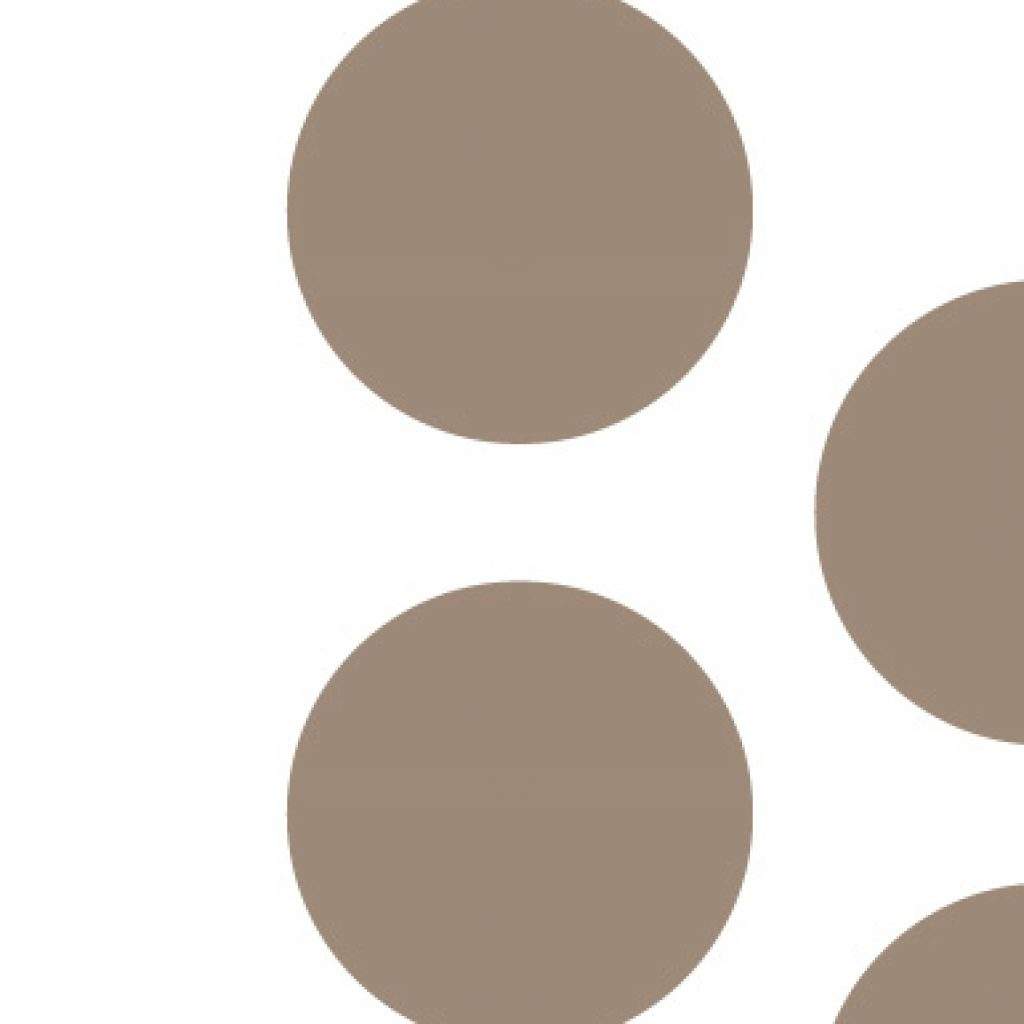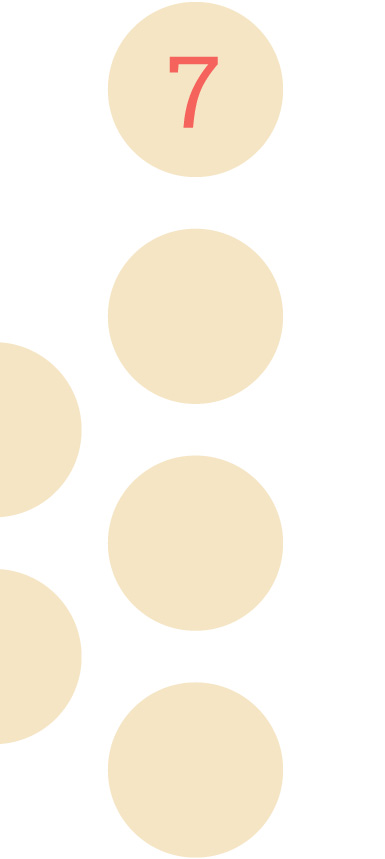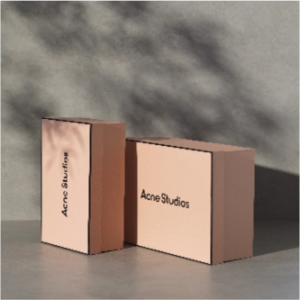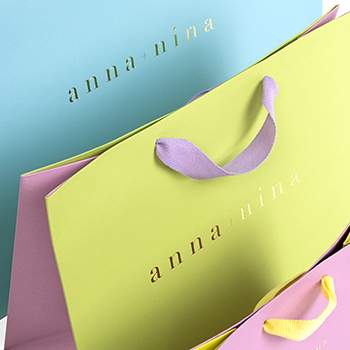7 things you should know when choosing packaging [GUIDE]
Your packaging means more than you think.
- Article, Ecommerce packaging, Store packaging
Everyone knows that the way clothing hangs on the hangers in stores and which products are displayed at the top of the page at a webshop matters. What we see has a big impact on our buying behaviour – both consciously and subconsciously. But today’s consumers also care about how products are packaged.
Luckily, packaging is something you can control, so you have the opportunity to secure your brand a green image in your customers’ books. Your packaging not only influences buying behaviour, but also perceptions of your company and brand.
In fact, a study has shown that 41% of your customers will repurchase a product due to the packaging design. Therefore, using time to develop a design that conveys your brand can pay off. Finding the right design for your business has several advantages:
- You take advantage of your branding and increase sales potential.
- You protect the products during transport.
- You can save space and materials – and thereby money.
- You create recognition of your brand and positive reactions among your customers.
Packaging exposes your brand to potential customers. Therefore, it’s important to spend time creating packaging that expresses your brand and values. Whether you need gift wrap, gift boxes or shipping boxes, there are many choices you need to make when selecting packaging for your business. In this guide, we provide 7 tips on how to choose your packaging.
The advice can be used by both those with physical stores and those with webshops. Each chapter concludes with questions you can address to become more aware of your packaging needs. Use it with your packaging supplier to create the best packaging for your business.
Table of contents
Table of contents
1. Match your packaging to your target group’s behaviour and values
2. Consider your brand – it plays an important role in your packaging
3. The journey of use places demands on your packaging
4. The practical and the aesthetics must work together in your packaging
5. Choose environmentally-friendly packaging
6. Find the right balance between brand value, quality and price
7. Take into account the production and delivery time

Match your packaging to your target group’s behaviour and values
You’ve surely already decided who your target groups are and have used it to target your marketing. But did you know that knowing your target audience is crucial to the customer’s experience of your products and thereby the packaging? You should therefore consider carefully which aspects are important for your customers when it comes to the packaging of your products. For example, do you know what’s important for your customers when it comes to gift wrap, carrier bags or shipping packages?
When you know your target group inside and out, you will have a clearer picture on how the packaging design should look and what to focus on. It’s about matching your packaging design with your customer’s values – not only their behaviour, but also their overall lifestyle. Therefore, spend some time identifying your target group’s preferences.
Find out your target group’s preferences
Do your customers prefer luxury, or would they rather save money? If you have high-spending customers that like luxury, you can choose a carrier bag of high quality with a luxurious print. On the other hand, if your customers are price-conscious and not too interested in a particular lifestyle, a standard carrier bag without a logo might be the right choice. The first step is to match your material choice to your customer’s preferences.
Are your customers environmentally conscious? Your customers’ preferences aren’t just about quality and price. Perhaps your target group is part of the growing number of consumers who are conscious about choosing environmentally-friendly products. If your customers are environmentally conscious, this can highly impact their buying decisions, and it’s therefore important that you clearly show this statement in your packaging.
For example, you can choose FSC paper or recycled plastic in order to show through your packaging that you are environmentally conscious, reaching out to consumers with environmentally-friendly preferences – who today can make up a large portion of your customer segment.

The customer’s self-narrative has a big impact on your packaging
Another consideration you should bear in mind when choosing your packaging solution is how the packaging makes your customer look, and how the customer can use the packaging as part of their self-narrative.
Does the packaging make your customer look young, stylish, smart or powerful? And how does that look go with your brand’s personality? If your brand says, for example, that everyone is special, make sure that it’s reflected in the packaging. Ask yourself how packaging makes your customer feel when they walk down the street with your bag in hand. This can help you understand your customer’s preferences.
Know your target group to a T
It’s all about understanding what’s important to your target group when they buy your products. You can ask yourself the following questions:
- Is it important for your customers to show what products they have bought?
- Do your customers identify with a specific lifestyle? If so, which one?
- Do they buy expensive or cheap products?
- Is an environmentally-conscious choice important for your customers?



Consider your brand – it plays an important role in your packaging
Effective communication requires a clear understanding of your brand. It’s this understanding that helps you on the way to finding the right packaging solution, as the packaging helps communicate your brand and values. Look at the packaging as an outfit for your products. It’s what’s seen first, so it’s vital that it reflects your brand. That is why you need to be aware of what your brand stands for and what values are important for your business. As many as 70% of consumers form their impression of your brand based solely on the packaging.
From brand style to brand experience
While some products sell well under a relatively anonymous brand, many product categories experience a sales increase when you begin actively working to make your brand visible. The stronger the brand experience you can provide for your customers, the higher you move up the ladder.
If you want to optimise customer loyalty, your packaging needs to reflect a real brand experience. Brands that consider all aspects of the customer journey experience the greatest customer loyalty. It might also be that the customers are so excited about their purchase, they film the unpacking process and post it on social media as part of the phenomenon known as “unboxing”.

How to think your brand into your packaging
Your packaging is an extension of your brand positioning and should give the customer the same experience of your brand as your product. You can make your brand clear by, for example, stirring your customers’ emotions and telling them where your brand stands.
Appeal to your customers’ emotions
With your packaging, you have the opportunity to impact your customers’ emotions – and feelings can mean greater customer loyalty and more purchases. You can do this with colours, pictures or text that you know your customers can relate to. Choose a visual style for your packaging and your carrier bags that puts your customers in the mood you want them to associate your brand with. Whether it’s humorous, loving or rebellious, you can influence your customers’ experience of your brand with the right visual touches.
Tell your customers what your brand stands for
Use your packaging as a canvas for the stories you want to tell with your brand. Share what you’re passionate about and why you were placed on this earth. Perhaps you can speak to your customers’ self-image, creativity or passion? Select which words you’ll use in your branding. Words can be the detail that gives your packaging an extra edge.
For example, take Jan Thomas Studio, which includes the words “Be Flawless” at the bottom of its stylish bags. This provides an edge and recognisability to the packaging and, thereby the brand. Another way to show your values can be by designing your carrier bags with a return address and postage to your store.
This way, your customers can easily return their unwanted clothing to you, and your business will be noticed for its efforts for a sustainable future. This strengthens your brand and gives value to your target group who want to think sustainably when it comes to their buying behaviours.


Know your brand – and show it through your packaging
Take the time to define your brand. This will make it easier for you to target your marketing and will help achieve more customer confidence because they know what you stand for. You can, among other things, consider the following:
- What does your brand stand for, and what are its values?
- What experience of your brand do you want to give your customers?
- Are there any particular tools that can highlight your company’s values, such as expensive graphics, messages, material choice or something else?



The journey of use places demands on your packaging
Your packaging has a long journey from the packing of items in your store or warehouse to the rough, uneven roads to your customer’s hands. In order for your packaging design to be successful, it’s important that you are also aware of all the practical requirements. Packaging needs vary depending on the type of product and customer segment you have. If you have a webshop aside from your physical store, you need to remember to think of the packaging for shipping. You can consider thinking about what your packaging should be able to do. It may be that your packaging has to:
- make it easy to transport products and return if necessary
- protect the products
- guide users
- be reusable
- take up as little space as possible when stored.
Think about the packaging’s journey of use carefully
If you want to ensure a good experience with your packaging and your product, it’s important to think the entire packaging use journey into the design. We’ll go through all the scenarios you should consider when it comes to the packaging’s journey from A to B.
How are my products transported?
You should think about whether you need packaging for your physical shop or whether you have products that need to be shipped across the country our internationally. Perhaps you need both? You should also be aware of the size and weight of your products. Are they large and heavy or small and light? How can they be carried? In a box or in a small bag?
If you have a webshop, one type of packaging can be good for shipping, while another type is better for returning products. For many retail chains, it’s important, for example, that customers can return clothes that don’t fit. You can, however, also design a shipping box to return items in, a 2-in-1 solution that saves you on packaging. Return packaging can therefore be a must if you have a webshop.
It should be easy for the customer to use, protect the product as well as the original packaging and can also be have a prepaid label. It makes the return process as hassle-free for the customer as possible, and it can be the deciding factor for whether the customer visits your webshop again.

How do I protect the products?
Whether products are being shipped a thousand miles or going directly from shelf to home, your packaging needs to be designed to withstand the journey. Worst case scenario is that the product breaks during transit.
But how do you best protect your products? Should you use durable material, or is it enough to use packaging with lower demands when it comes to the material it is made of?
Think about how your products are transported and what challenges the transport poses. You should also avoid large bags, boxes and excessive use of paper. It’s a waste of material, and your products can easily rattle around inside the package and become damaged. The consequence can be that the customer chooses a competitor the next time because they have better packaging that protects the product better.
Should I give my customers guidance before they unpack the goods?
When it comes to protection, you can instruct your customers to handle the products in a certain way if, for example, the contents are fragile. Perhaps your product requires a description or instruction on the outside of the product that explains just that.



Should the packaging be reused?
Many already reuse plastic bags to save the environment, but often, the plastic bags from the supermarket end up having a long service life, simply because they are designed to withstand more.
If you want your carrier bags to last longer, they should first and foremost be able to withstand reuse without the handle breaking or getting a hole at the bottom. In the same way, your carrier bag gains extra value and a longer life by adding an extra function.
It could be an extra handle that means it can be used as a shoulder bag. You can also choose to have your customers return the packaging to you so that you can reuse it in exchange for a discount code. This way, you send an environmentally-friendly signal to your customer, and there’s a good chance the customer will come back and use their discount code.
It’s also a good idea to inform the customer how the packaging can be reused or disposed of directly on the packaging. This can both help your company be profiled as environmentally friendly and make it easy for the customer to be environmentally friendly.
Should the packaging take up as little space as possible when stored?
Be clear about your needs and demands for packaging. By considering the low-level needs, you can make your work with packaging and returning easier. Here are some of the considerations you can take:
- How do you want your products to be transported? Should the products to be able to be returned upon delivery?
- What protection does your packaging need?
- Do your products require that you provide customers with guidance on the outside the packaging?
- Do you want the packaging to be able to withstand reuse?
- Do you have limited storage space? And what does this mean in regard to the storage of your packaging?

Practicality and aesthetics need to work together in your packaging design
Think of brands such as Adidas and Ikea. You can probably already see the stripes from the Adidas logo and Ikea’s blue and yellow colours. We all know logos that you only need to see a small corner of before you recognise the company.
The same goes for packaging. We quickly recognise bags, gift wrap or ribbons from a given company. They have branded their business – including their packaging – and we know exactly where the products come from. Your brand can be expressed through your packaging design in a variety of ways, including:
- Material
- Shape
- Colour
You can always get help from your packaging supplier, but here are some considerations to make yourself more aware of how you can use packaging in your branding.
Material: practicality and appearance must go hand in hand
The material plays an important role when it comes to the design of your packaging. A full 67% of consumers say the packaging material influences which product they choose. When you choose the perfect material for your packaging, you need to consider both practicality and appearance. Start by thinking about the practicality. Do your products weigh a lot? If so, the packaging material needs to be able to withstand more weight than if you have a jewellery shop, where the products weigh only a few grams.
The same goes for the question of whether your products need to be shipped. This requires extra protection of your products. The material’s appearance and characteristics can be a big factor when it comes to supporting your brand. For example, a brown craft bag can emphasize a more rustic or simplistic feel, whereas a more upmarket look for luxury products can be achieved by using luxurious material such as silk ribbons and thicker or glossy grades of paper. At the same time, 63% of consumers believe that packaging made of paper or cardboard gives products a high-quality image.
When we talk about material, it’s also important to think in more environmentally friendly ways. There are environmental certifications that guarantee sustainable forestry in the production of your packaging. You can also think sustainable by choosing a material that has less of an impact on the environment than traditional materials. You can read much more on environmentally-friendly packaging further down in the guide.



Shape: make it easy for yourself
Do you need packaging in a specific shape or do you just want to stand out with something different? Are your products long, wide small or square? Do you want an easy way to package a ball or a bicycle stand? You can make packaging your products easier by using a box for products with varying contours, but it may also be possible to use the shape of your products to create unique packaging. You can protect the environment and use less material in your packaging if you know how big your packaging needs to be. A pair of socks don’t need the same sized packaging as a blanket. On the other hand, it can be difficult to fit a large down jacket into a standard shopping bag.
Colour: a part of your branding
Colour can evoke certain moods and emotions in the viewer. Bold colours often give an impression of energy and happiness and can be a great way to catch people’s attention. Delicate colours may give the impression of a more sensual product and therefore have a different branding value. Be aware of what colours you use in your packaging so that they match your brand, suit your target market and send the right message.
By using colours in the right way, you can visually differentiate yourself from your competitors. If you already have a design manual and selected colours that you use as part of your visual identity in other areas, use these in your packaging as well. The colours will be recognisable to your consumers when they see packaging from your business, reinforcing consumer recognition of your business.
Graphics: Show your statement
Should your graphics be understated or scream out a statement? When your bag is carried around in public, your packaging is the eye-catcher that should help sell your products and, at the same time, suit your customers’ lifestyles. Strong graphics are a strong communicator. Just think about the sports brand Nike: The company dropped the lettering and focused solely on the recognisability of the shape – the iconic Nike tick. The graphics on your packaging should support your brand’s identity. Perhaps the graphics demand attentions and are full of energy, or perhaps they just need to be subtle and elegant. As a starting point, it’s a good idea to display your logo on your packaging, but also consider how you can use the graphics on your packaging as eye-catchers. Do you need to have graphics made to supplement your logo? Or do you just want to keep it simple because it matches your brand? You can also work with the surface of your products. It’s possible to use lacquer printing, which provides a glossy finish, or use embossing to make indentations of raised areas on the paper. Your packaging suddenly becomes more than just something for the eye – it also encourages customers to touch it, to “feel” your brand.
Which design suits your business?
The packaging possibilities are many, and it can be difficult to make decisions. But when you know your brand, your target group and their needs, you already have a great foundation for deciding on the design of your unique packaging. When it comes to your packaging design, you can consider the following:
- Are your products heavy or light? Do they require an extra durable material to be transported in?
- What type of material will suit your brand best? Coarse, rustic, fine, light, strong?
- What sizes bags, gift bags, or boxes do you need?
- What colours suit your brand best? Strong, clear colours, pastel colours, dark colours, black/white, metallic?
- What type of graphics can your brand and your target group identify with?

Choose sustainable packaging
Over 40% of consumers say that their purchasing decisions are influenced by whether a product’s packaging is environmentally friendly. Although this figure includes food packaging, it still tells the story of a more environmentally-conscious consumer – including on the retail front.
If you want to protect the environment while meeting customers’ increasing demands for environmentally-friendly packaging, you need to understand the product’s entire journey – from production to delivery and back again. Think about the materials used, how much packaging you use and whether it’s possible to reuse the packaging. By understanding the product’s journey, you can figure out where you can take action to reduce your carbon footprint.
When choosing more sustainable packaging, among others, you should consider these four things:
1. Go for recyclable materials
Choosing materials that can live on and be used again and again is one of the mores obvious ways to think environmentally when it comes to your packaging. There are oceans of possibilities when it comes to recyclable packaging – you just need to find the one that makes the most sense for your product. It could be a plastic bag that contains recycled film. This is far better for the environment than newly produced products. In terms of quality, bags with recycled film are just as robust as new bags but have a slightly rougher surface.
You can clearly see that it’s a recycled bag, but this can be used as part of your narrative. Another recyclable solution could be to switch the smooth gift wrap for coarse brown paper. The environment is significantly better protected when no chemicals are used in the production, and you can therefore gain a lot environmentally by using coarse, brown paper instead of coloured, smooth paper. If brown kraft paper doesn’t suit your brand, you can use uncoated paper. This is paper without a smooth outer film or glossy finish in gold or silver, for example. This way you cut out the use of plastic and metals.
2. Use less material
A study from Forbes Insight shows that $46 billion a year can be saved by eliminating packaging waste. There is a lot of waste the world over, which has in impact on both your finances and the environment. Unnecessary waste can also annoy your customers and create a negative brand experience. Therefore, there are many valid reasons to think about the size of your packaging.
Many brands use bags that are far too big in relation to their products. If you want to be both environmentally and price conscious, you can cut down to smaller bags in order to save on plastic or paper, which is good for both the environment and your budget. The same applies if you have your packaging cut to standard dimensions. This is cheaper than custom sizes because there’s not a lot of waste when the product is cut out on machines. A solution can also be to avoid heavy bags or boxes, especially if your product is not heavy and therefore does not need a thick bag to carry it home in. You can make do with a thinner variety.


3. Go for certified methods
You can’t go wrong with environmentally certified packaging. It’s a great way to ensure sustainable packaging. When you use certified methods, you gain greater confidence in the quality and the processes that packaging goes through. It can, however, be difficult to distinguish between the different certifications. We will therefore give you a little help and provide information on three of the most important certifications here:
The FSC®️ label: Most retail chains need to be able to package products with paper or cardboard. Whether it’s gift wrap or cardboard shipping boxes, paper products are among the basics when it comes to packaging. It’s therefore important to think about where the paper comes from. If you want to be sure of a sustainable paper choice, you need to know the FSC®️ label. The FSC®️ label, recognised worldwide, is your guarantee that your paper originates from certified forests, where new trees are planted when an old one is felled. The FSC®️ label also guarantees fair wages and safe working conditions for the people that work in the forests.
Tüv Austria: When you need plastic bags, Tüv Austria certifies, among other things, bioplastics, which are plant-based plastics. They have the same properties as regular plastic and can be reused like ordinary plastic.
Blue Angel: A last important certification is Blue Angel, which is a German environmental and ecological label that promotes environmentally and consumer-friendly products. The label shows that a product has exceptionally positive properties in relation to the environment, and that your packaging lives up to the detailed criteria set by a comprehensive regulatory framework.
Show your customers that you think about the environment
You can show your customers that you’ve chosen environmental solutions – either by writing it directly on the packaging or by having recognisable certification labels, such as the FSC®️ label, on the packaging.
4. Use renewable materials
In addition to the above solutions, you can choose materials that can be renewed time and time again. For example, this could be the mentioned FSC®️ labelled paper, where you know a new tree is always planted when one is felled. You can also think in new ways and choose innovative renewable materials such as:
- Bamboo: A durable material that can easily be reused.
- Seaweed: Seaweed is both organic, environmentally friendly and is available in large quantities.
- Corn starch: An organic material that is similar to plastic but is more environmentally friendly.
- Bagasse: from sugar cane fibres, which can replace paper as it decomposes quickly.
There are therefore plenty of possibilities to think more sustainably when you choose your packaging material. All you have to do is think innovatively and always keep the environment in mind.
What should you to think about when you’re trying to be eco-friendly?
The environmentally-friendly choice of packaging requires a lot of consideration, but it can make a huge difference to your customers and their perceptions of your brand. On your journey to greener packaging, it’s a good idea think about:
- Environmentally-friendly packaging can be more expensive than regular packaging. Are you willing to pay a bit more to bring sustainability to your business and your customers?
- The range of environmentally-friendly materials and packaging is large, but not as large as what’s available on the standard shelves. Are you willing to compromise on the packaging design in order to choose a greener solution?
- Can you minimise the material in your packaging?
- Can you use recycled materials?

Find the right balance between brand value, quality and price
To ensure a good and durable packaging solution, we recommend that you consider the packaging price as part of your production costs. In most cases, packaging is indispensable, and it therefore has almost as great an influence on customers’ perceptions of your brand as the product itself.
When you consider the price, think about the type of packaging that suits your needs – whether it’s a special design or whether it comes from a standard range. This can have an impact on the price. Both types of design have their advantages and disadvantages, and it comes to choosing what suits your business more than the cost.
Custom packaging is a unique solution
55% of online shoppers say they will return to a website if their purchase comes in specially-made packaging. Custom packaging is therefore an obvious choice if you want to stand out to your consumers. With custom packaging, you can design your packaging solution 100% so that it matches your brand and tells your story through the packaging quality, look and design.
A unique packaging solution can provide exactly the experience you want to give your customers. This type of solution is therefore a clear choice if your target group values your brand. If you choose custom packaging, however, be aware that you’ll need time to create prototypes, carry out tests and go through redesigns in order to get the best result. This requires that you get started in good time.
Custom packaging is often more expensive than a standard solution, but the investment is sure to increase your sales potential and visibility of your brand’s values, as the packaging will have a unique look and function.
Standard packaging – a cheaper and fast solution
Although it’s tempting to choose a custom solution with its own printing and special folding methods, for some brands, more standardised packaging may be sufficient. Standard packaging is usually already in stock or very fast to produce, making it cheaper and faster. In fact, many brands can go a long way with standard packaging. Even though they are ready-made solutions, the range of standard packaging is so wide, that brands can often find something that suits them. Even if it’s standard packaging, it’s still possible to evoke emotions in your customers.
If you want packaging that, for example, looks luxurious, you can combine heavyweight gift wrap with tissue paper, a matching silk ribbon, and perhaps a simple card in matching colours. With care and thought, you can absolutely make your brand visible through standard packaging – and save on the costs of a custom design.
What does brand value cost?
Find the right balance between design, brand value, quality and price. The price of packaging depends on the quality requirements you have and the story you want to tell. There’s one important thing to remember: At times, you have to make compromises to stay within budget. So, what’s most important for you and your brand when it comes to packaging?



Take into account the production and delivery time
What are typical production and delivery times?
Delivery time of your packaging is composed of several factor, including:
- the material you’ve chosen.
- how large a quantity you need.
- how complex your packaging is to produce.
Typically, it takes around 2-12 weeks before your order arrives at your door. You should take this into account when planning to use a new design for your products or if you’re about to launch a campaign. This timeframe applies to both large orders of standard products and if you want your own custom printed packaging.
Custom prints and large orders take time
Before you get to the production and delivery of your packaging, you generally have to go through a design process, in which your design is developed and discussed in collaboration with your packaging supplier.
The development and testing of newly designed packaging typically takes around three months. So, for example, if you want special Christmas packaging, you should start developing the design by the summer holidays.
Choose your supplier carefully
The choice of supplier for your packaging also has an impact on the production and delivery time – not to mention how your final product will look in terms of design and quality. Your needs can vary from luxurious and innovative packaging to more basic, standard packaging. You should therefore look for a supplier that has experience with your branch and needs.
You should also check whether the supplier has experience from previous tasks that are similar to what you need. Experienced suppliers can often save you both time and money. If you want environmentally friendly packaging, you may want to check whether your packaging supplier has an environmental and sustainable profile in their Code of Conduct and whether they have the right certifications – and last but not least, whether they can document these certifications.
Get successful packaging
The right packaging gives your customers the best possible buying experience, which increases customer loyalty and revenue in the long run. As many as 30% of businesses experience an increase in revenue by improving their packaging. If you’ve taken the above advice to heart, you’re well on your way to successful packaging for your business. On the next page, we’ve assembled a checklist to ensure you’ve considered all the important elements in your packaging process, so you can give your customers the best experience with your brand and product.
Checklist for your packaging design
Checklist for your packaging design
- I know my customer and know what they value when it comes to packaging.
- I’ve thought about what experience the packaging should provide for the customer and what emotions it should evoke.
- I’ve thought about the entire journey of use – from manufacturer to bin.
- I’ve considered the impact that adds value for my customers and supports my brand in my packaging design.
- I’ve considered how much the environment and sustainability matter to my customers and brand and have chosen the right, environmental consideration and certification.
- I have found a good balance between quality and price and know what compromises I’m ready to make.
- I am in good time and have checked with my supplier that the packaging can be delivered by the date I want.
References:
- Gondokusumo R. Reasons Why Good Packaging Design is Absolutely Important. Sribu Corner. https://blog.sribu.com/en/why-good-packaging-design-is-important/. Published 2018. Set marts 29, 2019.
- Olaleye H. Packaging Attributes And Its Effect On Purchase Decisions ; A Study Of Buyers At Setz Mega Mart. 2017.
- Shridhar A. Survey Results 8 Global Consumer Types for Marketing in 2018.; 2017.
- The Nielsen Company. Global Consumers Seek Companies That Care About Environmental Issues. The Nielsen Company. https://www.nielsen.com/eu/en/insights/news/2018/global-consumers-seek-companies-that-care-about-environmental-issues.html. Published 2018. Set maj 13, 2019.
- New Survey Unveils 7 in 10 Consumers Agree Packaging Design Can Influence Purchasing Decisions: https://www.globenewswire.com/news-release/2018/05/04/1496881/0/en/New-Survey-Unveils-7-in-10-Consumers-Agree-Packaging-Design-Can-Influence-Purchasing-Decisions.html, 2018.
- ElGhany Hassan AA, Nagieb Mostafa DHM. The Importance of packaging design as a branding Factor in Consumer Behavior. 2018.
- The Nielsen Company. Consumer-Goods’ Brands That Demonstrate Commitment to Sustainability Outperform Those That Don’t. Nielsen. https://www.nielsen.com/us/en/press-room/2015/consumer-goods-brands-that-demonstrate-commitment-to-sustainability-outperform.html. Published 2015. Set april 3, 2019.
- Forbes Insights. The Empty Space Economy. https://blog.dssmith.com/download-whitepaper-the-empty-space-economy-rapport, 2018
- The Power of Packaging You Probably Did Not Know About. https://www.packagingoftheworld.com/2017/07/the-power-of-packaging-you-probably-did.html, 2017.
Let's talk
We would like to hear from you if you have any question or need a quote. Fill out this form and one of us will get it touch with your shortly.
Other stories
ARTICLE
Packaging is an important tool in your marketing – use it!
Do you see your packaging as a practical way to protect your products? A study shows that a third of your customers’ buying decisions are based on how the packaging for your product looks.
ARTICLE
Here’s why you should go from brown cardboard box to brand experience
Good packaging is your chance to improve the customer experience and ultimately, gain higher profits. We will guide you through the benefits of good packaging design and what it means for the brand and customer experience.
ARTICLE
What is up and down when choosing a packaging supplier?
It’s important that you make the right considerations about what is essential to your business before contacting a package supplier. Here, we provide you with an overview of what you should consider and ask your supplier about.






